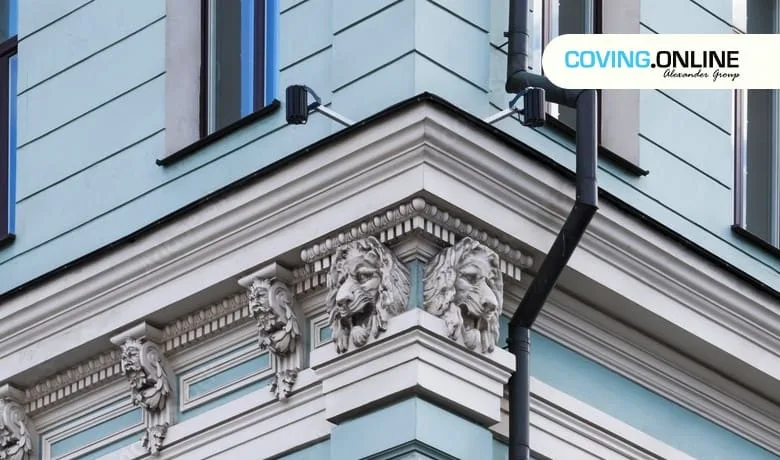blog
What You Need to Know About Timeless Cornice Architecture
“What You Need to Know About Timeless Cornice Architecture Styles?” “Discover classical and modern styles of cornice architecture, materials, restoration techniques, and innovative lighting integration. Explore our exquisite collection for architectural refinement at Coving Online.”
How Cornice Architecture Elevates Spaces? A Timeless Blend of Elegance.
Cornice Architecture is a defining feature in interior and exterior design, adding a touch of grandeur and sophistication to buildings. Cornices have evolved from classical to contemporary styles over the centuries, leaving an indelible mark on architectural aesthetics.
What Defines Cornice Architecture?
In antiquity, cornices were an integral part of Greek And Roman Architecture, serving both functional and decorative purposes. Furthermore, they diverted rainwater from the building’s facade, preventing erosion. Additionally, cornices also played a pivotal role in defining the overall visual appeal of ancient structures.
Types and Styles Cornice Architecture
To begin with, classical cornices are characterized by their ornate detailing and intricate profiles, often featuring motifs like dentils, egg-and-dart, and acanthus leaves. Moreover, Neoclassical Architecture revived these elements during the Renaissance, emphasizing symmetry and proportion. Not to mention, modern interpretations of cornices have embraced clean lines and minimalist designs, offering a sleek and contemporary aesthetic.
Functional Elegance Cornice Architecture
In addition to their aesthetic appeal, CORNICES are practical in today’s architecture. For instance, they provide a protective barrier against water infiltration and weather damage, extending the lifespan of the building. Furthermore, they play a crucial role in directing rainwater away from the walls, ensuring the structural integrity of the facade.
Custom Cornices Architecture
First and foremost, Custom Cornices offer a unique opportunity to infuse your style into architectural design. Moreover, they can be crafted to complement specific architectural features, harmonizing with the overall design scheme. In addition, working with skilled artisans allows for creating bespoke cornices that reflect your taste and preferences.
Contemporary Applications Cornice Architecture
With the evolution of architectural trends, cornices have found new life in contemporary design. To illustrate, sleek and streamlined profiles bring a touch of sophistication to modern buildings. Furthermore, creative applications, such as concealed LED Lighting within Cornices, add an innovative dimension to residential and commercial spaces.
How Cornice Architecture Can Do? Elevating Spaces in Timeless Elegance.
Cornices are a testament to the enduring appeal of Classical Design elements in today’s architectural landscape. From their historical significance to their modern applications, cornices continue to be a cornerstone of elegant and functional architecture.
How to Discover the Crafting Timeless Elegance with Cornice Architecture?
Enhancing Aesthetics and Durability Cornice Architecture Selecting suitable materials for cornices is crucial for achieving visual appeal and longevity. For instance, traditional materials like plaster offer intricate detailing and a Luxurious Finish, while modern options like polyurethane provide durability and easy maintenance. Furthermore, the choice of fabric can significantly influence the overall aesthetic impact of the cornice.
Interior Flourish Cornices in Living Spaces
In interior design, cornices can be the pièce de résistance, elevating the entire room. For example, in living rooms, they draw the eye upwards, creating a sense of verticality and grandeur. Additionally, ornate cornices can be paired with Crown Moulding and ceiling medallions for a cohesive and opulent look.
Exterior Splendor Cornices in Architectural Landscapes
Beyond interiors, cornices are pivotal in defining a building’s external character. For historic buildings, accurately replicating original cornices is essential for preservation efforts. Additionally, modern architectural designs often use cornices to add a touch of sophistication and create a distinctive silhouette.


